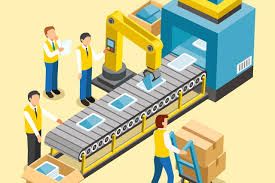The Founding of Modern Day Economics and Capitalism

We will learn about the founding of economics and capitalism, and the founder Adam Smith.
Aug 31, 2025
Introduction
Adam Smith, also known as the father of economics, wrote his book: An Inquiry into the Nature and Causes of the Wealth of Nations in 1776, during the American Revolution and only a few years before the French Revolution. Smith, in his book, attempted to find out what the true wealth of a nation is and how it comes into being in the long term. His ideas questioned the original economic ideas of the time and established the basis of modern capitalism and economics.
Mercantilism and Why it's not Efficient
One of the important concepts that Smith disagreed with was mercantilism, which was mainly about driving exports and gathering precious metals like gold and silver. Mercantilism viewed wealth as a fixed, zero-sum game, which meant that if one person or nation grew wealthier, someone else had to grow poorer. Smith didn't share this view and felt wealth was created through productivity like manufacturing that could potentially make everyone wealthier.
Smith's Breakthrough
In Smith's day, agriculture and cattle raising were the major ways of production. Smith began to realize that there were alternative sorts of work that were value-adding. Smith discovered the concept of value-adding where lower-value materials could be combined with human expertise and machinery to create something of higher value. The transformation by human labor and machines, of cotton into threads into fabric and then into clothes, for example, created a higher-value product than just the raw cotton.
The Application of Smith's Idea
As the Industrial Revolution began to take shape, Smith and others understood that manufacturing was no different from agriculture in that it was also a means of production. If seeds, water, and fertilizers could lead to crops, raw material, tools, and expertise could lead to products such as swords or armor. The sole distinction was that manufacturing could be controlled completely by humans, as opposed to agriculture, which depended to a large extent on nature. This transition allowed nations to become economically developed without needing to expand their territory, as factories could be created from the ground up.
The Changes that Came from Smith's Idea
This new awareness brought about a lot of societal changes. Humans began migrating out of the countryside and into the urban areas where employment in industry could be had. The shift to industry was not one easily made at first since it was one that needed to be paid for and people had to change their mentality and perspective from the original zero-sum ideology of agriculture. Most individuals hated the shift at first since farming was seen as easier, safer. After the shift was made, though, it resulted in mass production, higher productivity, and higher quality goods—making most individuals richer than they once were.
The Application in the Modern Day
Adam Smith also came up with the idea of capital and finance by incorporating that not only human labor but also equipment, machinery, and investments could be engaged in the production of value. He outlined a general path of economic progress: societies start off as agrarian economies based on agriculture, then they become industrialized economies, and finally they become service economies. We see this progression in the modern world, as we have today with companies like Starbucks and Apple and others embodying the service phase of economic growth.
Smith's Second Breakthrough
A key driver of economic growth, Smith believed, was trade. He believed that instead of individuals or nations trying to produce everything for themselves, they should specialize in what they were best at and trade for the rest. For example, the manufacturing of cloth could be a chain of workers, each with a specific dedication to a part of the manufacturing process—planting cotton, yarn-making, weaving, sewing, etc. This division of labor increased the quality and quantity of goods. Nations would do the same thing and specialize in what they did best and trade for the remainder.
Smith's Third Breakthrough
Finally, Smith concentrated on the demand and supply. He believed that the amount of laborers in a particular industry should balance the demand for goods to avoid inflation and waste. Just as the division of labor among people had made humans more productive, the division of production among states could lead to greater overall wealth. Though the majority of them were not able to move out of the old zero-sum thinking.
Conclusion
Smith's ideas eventually redirected people's thinking regarding wealth, growth, and the role of human labor in the economy—ideas that continue to power our world today. This is why Adam Smith is regarded as the father of capitalism and modern economics, as he changed everyone’s ideas on the importance of capital by making economics a separate subject from mathematics.